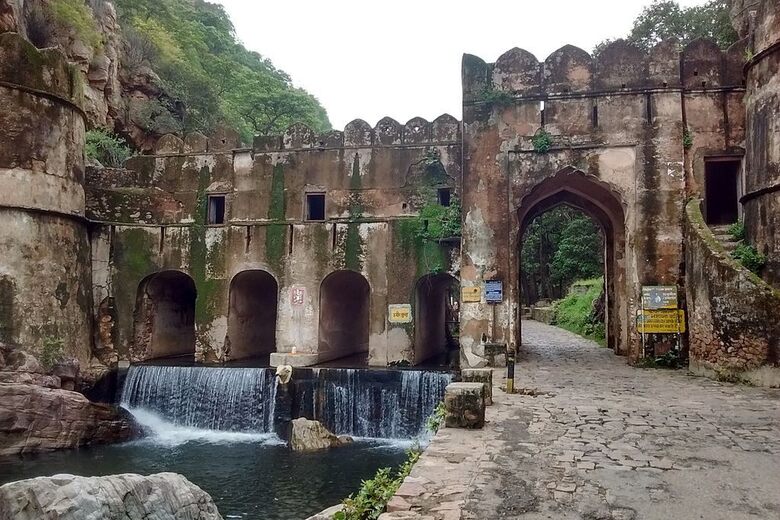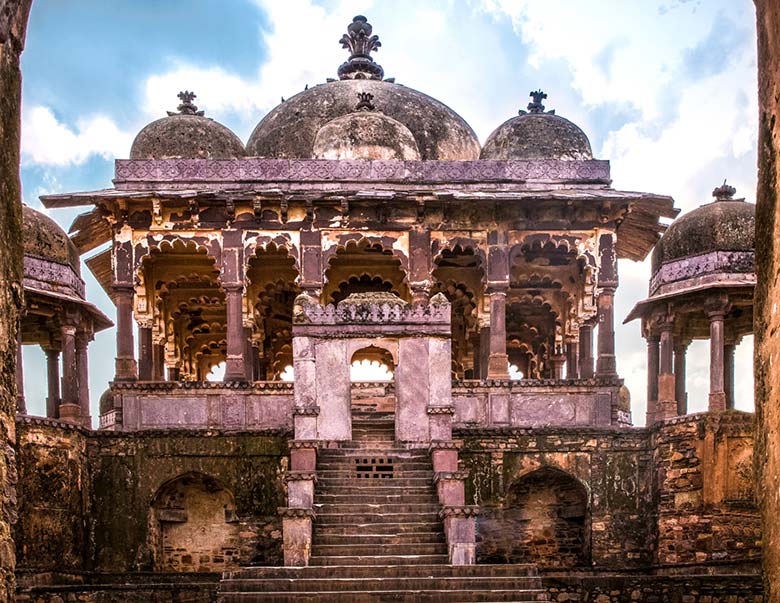The forts in Rajasthan defined royalty and power in the yesteryears, today the shine must have lost, and the embellishments must have faded away, but the ruins of the fort still create a colossal impact in the minds of the visitors. The Ranthambore fort like the others stands out for its distinctive history and architecture standing tall amongst the wildlife.
The Ranthambore fort with 5 other forts was declared a UNESCO World Heritage site in 2013, as part of a group of six hill forts in Rajasthan.

Though the exact origin of the fort lies undiscovered, it is widely believed that the construction started under the reign of Chauhan Rajput King Sapaldaksha however the name remains disputed. Nevertheless locals confirm that the construction began in the middle of the 10th century. Illtumish had captured the fort in 1226 but the Chauhans successfully took it back after his death. The fort saw its golden years under the reign of the Raja Hammir Singh (1282-1301). In 1300 Alauddin Khilji tried to conquer the fort but conquered it on the third time after remaining unsuccessful twice.
The fort changed hands many times with powerful rulers taking it under control. In 1568, Akbar lead a massive attack and after a month-long siege conquered the fort which remained with the Mughals as a residence and then as a prison till the 18th century. The fort finally rested with Kachwahas of Jaipur a few centuries later.
The Ranthambore national park once was the hunting ground for the kings and boasts abundant flora and fauna. The fort stands atop on a 700-foot high hill, spread across 7 km in circumference and is enclosed by walls and bastions acting as a primary defense for this strategically planned fort. Ranthambore fort also promises some of the best views that grow majestically green and breathtaking as the elevation rises.

The ruins of the fort include palaces like Dullah Mahal, Hammir Court, 32 Pillared Chhattri along with many other architectural marvels like war memorials and various other monuments. The Ranthambore fort is a fine example of a forest fort and also has many gateways like Navlakha pol, Hathia pol, Ganesh pol, Andheri pol, Sat pol, Suraj pol with variations in architecture in each gateway.
There are three Hindu temples dedicated to Ganesh, Shiva and Rama and there is also a Jain temple of Lord Sumatinath and Lord Sambhavanath constructed in 12th and 13th centuries from red Karauli stone which was also a pilgrimage for many devotees. Out of these the Trinetra Ganesh Temple is the most prominent and is believed to be the oldest Ganesh temple in Rajasthan.
History Ranthambore Fort
The oldest settlement in the area near Sawai Madhopur was around the Ranthambhore fort. The exact origin of the Ranthambore fort is still disputed but it is generally accepted that there was a settlement at the site of the Fort, as far back as the 8th century A.D. It is widely believed that the construction of the Ranthambhore Fort was started during the reign of the Chauhan rajput King Sapaldaksha in 944 AD. Another theory stipulates that King Jayant, also a Chauhan rajput, built the Ranthambore Fort during 1110 AD. It is most likely that the construction of the fort commenced during the mid 10th Century A.D. and continued for a few centuries after that.

Since, the Ranthambhore Fort controlled the trade routes between North India and Central India, it was highly coveted by the rulers of North India. The Ranthambore Fort had its golden moments during the reign of the king Rao Hammir, the last ruler of the Chauhan dynasty (1282 – 1301 AD). During 1300 AD, Ala-ud-din Khilji, the ruler of Delhi sent his army to capture the Fort. After three unsuccessful attempts, his army finally conquered the Ranthambhore Fort in 1301 and ended the reign of the Chauhans. In the next three centuries the Ranthambore Fort changed hands a number of times, till Akbar, the great Mughal emperor, finally took over the Fort and dissolved the State of Ranthambore in 1558. The fort stayed in the possession of the Mughal rulers till the mid 18th century.
During the mid 18th century, the Maratha rulers of Western India were gradually increasing their influence in this region. In order to check the growing influence of the Marathas, Sawai Madho Singh, the ruler of Jaipur state, unsuccessfully, requested the Mughal emperor to hand over the Ranthambhore fort to him. In 1763, Sawai Madho Singh fortified the nearby village of Sherpur and renamed it Sawai Madhopur. This town, which is now commonly known as the “Sawai Madhopur City”, lies in a narrow valley between two parallel hills, at the South Western edge of the Ranthambhore National Park. Two years later, the Mughals handed over the fort to the Jaipur state.

During the end of the British Raj, Sawai Man Singh, the last ruler of Jaipur state, got a railway link constructed between Jaipur and Sawai Madhopur. A railway station was built about 4 kilometers away from the Sawai Madhopur town. Gradually, a small settlement came up around the railway station. This twin of Sawai Madhopur, known as “Man Town”, has now outgrown the older “City”.

No comments:
Post a Comment